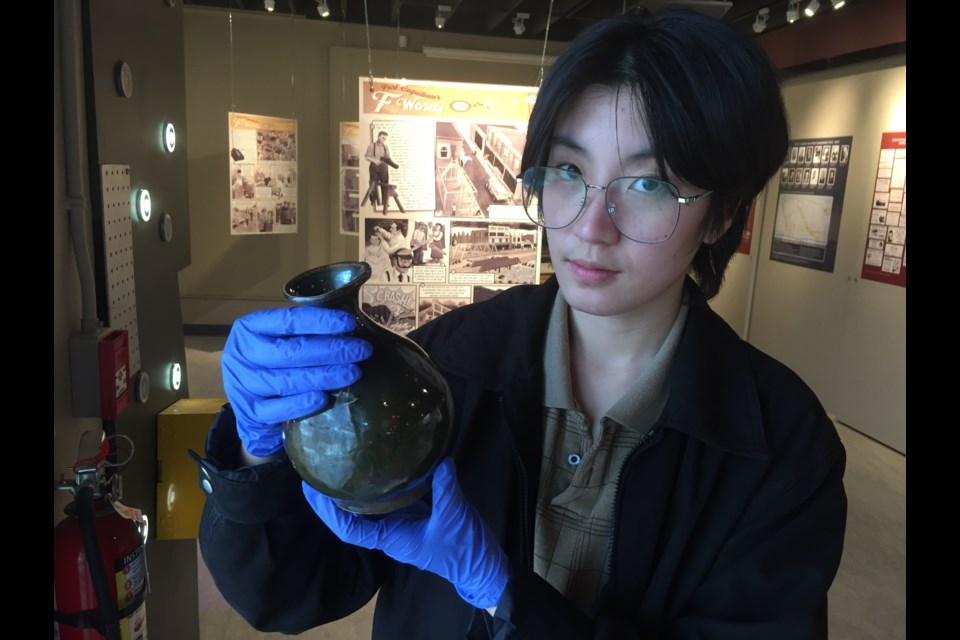A box of dusty bottles unearthed in an attic at the No. 2 Port Coquitlam fire hall is connecting the city to its distant past.
At first, the collection of glass bottles and pottery didn't appear to be anything special.
But when a high school student looked closer at the Chinese characters embossed on the glassware, Queena Li was instantly curious about the find.
"When I saw it [the characters], I thought, 'There's Chinese writing on here.' Then I got interested and thought it was more unique," recalled Li, a Grade 10 Heritage Woods Secondary student who volunteers for PoCo Heritage Museum and Archives.
The bottles were recovered during an effort to catalogue some of the museum's collection, which has been housed at the fire hall on the city's northern side since the 1990s.
Alex Code, museum manager and curator, said that with the help of Li, and other volunteers, including Lily Liu and the Wongs’ Benevolent Association, which also provided translation help, it was discovered that the bottles were likely imported to Canada from San Francisco, Hong Kong and China.
They were probably used by labourers who worked at a shingle mill and charcoal kiln on Port Coquitlam's northern side and who lived in a three-storey bunk house.
Further research suggests PoCo's early Chinese settlements and businesses were along Dewdney Trunk Road, at the intersection of Oxford Street and Coquitlam Avenue, and on Dominion Avenue.
Now all that's left of these lively places is a box of bottles.
But through connections prompted by the bottle find, Code said he has tracked down some interesting information about the city's early settlers.
According to the museum, the charcoal kiln was owned by the Kwong On Wo Company, a Vancouver-based group that was one of the firms responsible for supplying the Canadian Pacific Railway (CPR) with Chinese workers.
In addition to contract labour, however, they also provided charcoal for cook stoves and heat stoves for the CPR trains.
Further research spurred by the bottle find revealed even more archival references and photos. An oral history with Gordon Lee, an early settler, documented how the Lee family had several properties in downtown PoCo, including the Coquitlam Café.
Code said the Lee family was at the "heart of local business by the early 1910s."
In addition to owning downtown businesses, they also rented out land along Dewdney Trunk Road to other merchants, such as the doctor’s office and barbershop.
The museum also has a photograph showing a sign for the Star Laundry, for example, an early Chinese-owned business on Dewdney Trunk Road in Port Coquitlam.
"A lot of people are coming together to tell this history that unfortunately hasn't been told before," said Code.
Li said she was excited to help further the research by identifying the Chinese characters on the bottles and glassware.
Though faded, the characters were similar to those used today, and revealed the bottles had been used for multiple purposes.
One particularly beautiful piece of pottery was likely for alcohol, another glass jar was used for fermented tofu.
One bottle, for example, had the words "Florida Water," which could also be interpreted as "Floral Water" used for heat stroke, she said.
Li said she's used a similar medicine to reduce the effects of heat, noting she found it thrilling to identify things used in the past that she knew about.
"We come from the same source and even though we are so far apart. We have the same foods and medicine in common."
Li said she hopes to study history in the future and finds it interesting how something that seems random can connect people across time and cultures.






